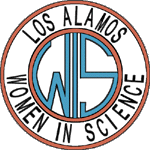 |
Northern Chapter of the New Mexico Network for Women in Science and Engineering LUNCHTIME TALK SERIES https://nmnwse.org/lawis/lunchtalks sponsored by the Synergy Center and the Bradbury Science Museum Talk at 12:00, Wednesday, July 26, 2006 Synergy Center Conference Room, 3rd flr Bldg 1, Los Alamos Research Park |

|
|
Irina Cislaru
Entry Rates of Bacteriophage T7 DNA into E. Coli Cells |
 | Members and Nonmembers Welcome - Open to the Public |  |
Bacteriophages (phages) are viruses that infect bacterial cells. Bacteriophages can have a protein "tail" attached to the protein shell (or phage head), which is used to infect the host bacteria. Bacteria have a cell wall protecting their cell membrane therefore bacterial viruses cannot merge with the membrane as do animal viruses. After binding to the cell surface, most bacteriophages inject their nucleic acid into the bacterial cell.
T7 is a relatively small bacteriophage that normally infects E. coli and some Salmonella and Shigella strains. T7 possesses a phage head, a short tail, and tail fibers. Inside the phage head is a packaged 40 Kbp (bp: the number of base pairs is is often used as a measure of length of a DNA segment) linear genome and a complex of proteins (referred to as the internal core complex). Following the attachment to the host cell, these proteins are delivered through the tail and in turn assist in delivery of DNA. The most unusual feature that distinguishes this small phage from other phages is how the phage DNA enters the cell. Unlike the other phages, the viral genome is not injected, but rather the core complex delivers about 850 bp into the cell, stops, and the remaining DNA enters as a result of transcription of the genome by host (E. coli) RNA polymerase and T7 RNA polymerase. In other words, the entry of the T7 genome into the cell is coupled with the first step of protein manufacture in the host cell, which is transcription (catalyzed by an enzyme called RNA polymerase). The polymerase actually pulls the DNA into the cell during transcription. One of the first proteins produced by the cell at the beginning of infection (when only the first part of the viral DNA is already in the cell) is a viral T7 RNA polymerase which will take over the host's RNA polymerase and will translocate the rest of the genome into the cell, while transcribing it. We have developed an assay that allows measurements of the rates of T7 genome translocation from the phage head into the cell under various experimental conditions.
Biography -- I graduated the University of Bucharest (Romania) with a BSc degree in Physics (major Biophysics). I became interested in biological research while working as guest researcher in the Department of Anatomy, School of Medicine at Hokkaido University, Japan. I came to US in 1999. I lived in New Jersey for the first three years. I volunteered for one year and a half in a C. elegans laboratory in the Department of Molecular Biology and Biochemistry at Rutgers University. In 2001 I entered the MSc program and continued to work in the same lab as research assistant. I have studied the cell death (apoptosis and necrosis) in C. elegans, especially the engulfment of dead cells and the corpse persistence at different stages, using the RNAi feeding technique. In 2002 I moved to Austin, Texas, where I was enrolled in MSc program at University of Texas at Austin for three years. In one of the microbiology laboratories at UT, I have worked on the rate of translocation of bacteriophage T7 DNA across the membranes of E. coli. I moved to Los Alamos last summer.
